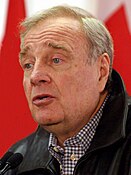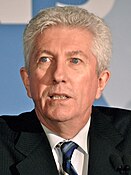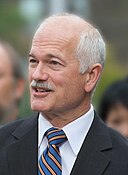
Back Kanadische Unterhauswahl 2006 German Elecciones federales de Canadá de 2006 Spanish Élections fédérales canadiennes de 2006 French הבחירות הפרלמנטריות בקנדה 2006 HE Federala elekto di Kanada, 2006 IO Elezioni federali in Canada del 2006 Italian 2006年カナダ総選挙 Japanese Canadese federale verkiezingen 2006 Dutch Canadian federal Leckschion, 2006 PDC Wybory parlamentarne w Kanadzie w 2006 roku Polish
| |||||||||||||||||||||||||||||||||||||||||||||||||||||||||||||||||||||||||||||||||||
308 seats in the House of Commons 155 seats needed for a majority | |||||||||||||||||||||||||||||||||||||||||||||||||||||||||||||||||||||||||||||||||||
|---|---|---|---|---|---|---|---|---|---|---|---|---|---|---|---|---|---|---|---|---|---|---|---|---|---|---|---|---|---|---|---|---|---|---|---|---|---|---|---|---|---|---|---|---|---|---|---|---|---|---|---|---|---|---|---|---|---|---|---|---|---|---|---|---|---|---|---|---|---|---|---|---|---|---|---|---|---|---|---|---|---|---|---|
| Opinion polls | |||||||||||||||||||||||||||||||||||||||||||||||||||||||||||||||||||||||||||||||||||
| Turnout | 64.7% ( | ||||||||||||||||||||||||||||||||||||||||||||||||||||||||||||||||||||||||||||||||||
| |||||||||||||||||||||||||||||||||||||||||||||||||||||||||||||||||||||||||||||||||||
 The Canadian parliament after the 2006 election | |||||||||||||||||||||||||||||||||||||||||||||||||||||||||||||||||||||||||||||||||||
| |||||||||||||||||||||||||||||||||||||||||||||||||||||||||||||||||||||||||||||||||||
The 2006 Canadian federal election was held on January 23, 2006, to elect members to the House of Commons of Canada of the 39th Parliament of Canada.
New details of the sponsorship scandal were released through the Gomery Commission, and the three opposition parties aimed to bring down Liberal Prime Minister Paul Martin's minority government, contending that it was corrupt. On November 28, 2005, Martin's government was defeated on a motion of non-confidence. A day later, Martin met with Governor General Michaëlle Jean to dissolve parliament, triggering an unusual winter election.
The Conservative Party, that was formed in 2003 from the merger of the Progressive Conservative Party and the Canadian Alliance, scored its first-ever victory as they won the greatest number of seats in the House of Commons, winning 124 out of 308, up from 99 seats in 2004. Due to the emerging details of the sponsorship scandal, as well as a unified right-of-centre party, the Tories led by Stephen Harper went on to end over 12 years of Liberal rule. Harper formed the smallest minority government in Canadian history (in terms of proportion of seats), becoming prime minister. The New Democratic Party experienced a modest boost in support whereas the Bloc Québécois' seat count nearly stayed the same. This is the most recent election in which the winning federal party did not win New Brunswick and Ontario.
Cite error: There are <ref group=lower-roman> tags or {{efn-lr}} templates on this page, but the references will not show without a {{reflist|group=lower-roman}} template or {{notelist-lr}} template (see the help page).





